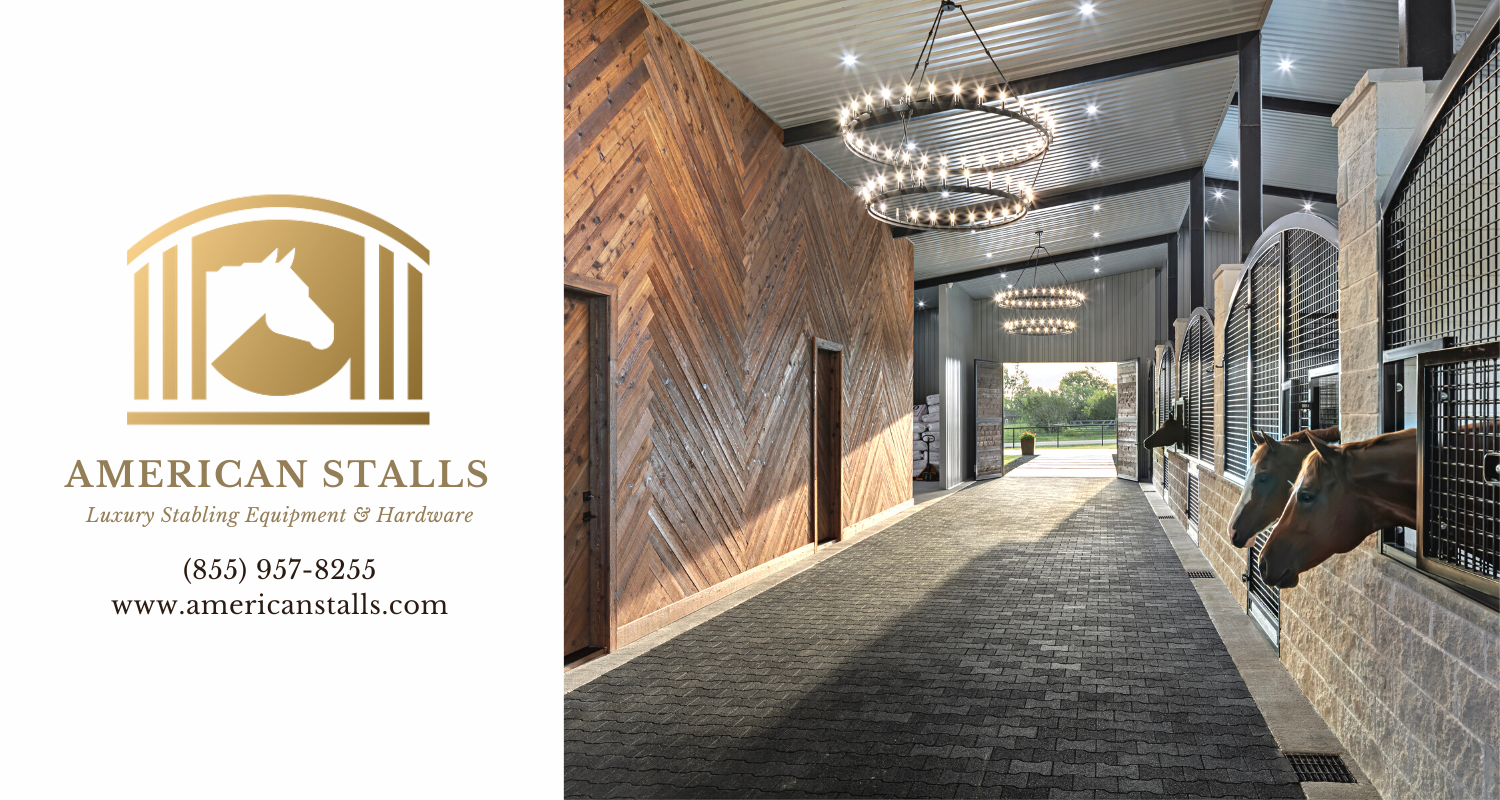Modern horse owners are always being mindful about airflow and ventilation in the barn. This informative blog post is brought to you by American Stalls.

Airflow is imperative to any climate, warm or cold. Horse barns with ample airflow allow for better lung health in your horses (fewer respiratory problems), less risk of airborne bacteria and a well-ventilated barn. Horse stalls are a key component in promoting or hindering the airflow in your barn.
Mesh Horse Stalls
Traditional stall fronts are wooden on the bottom with vertical metal bars on top. Most barns have this set up. It looks nice and provides visibility and safety. While most clients enjoy this look, American Stalls recommends to add steel mesh in a horse stall design.
Benefits of Mesh:
Increased Ventilation
Increased Visibility

Mesh & Ventilation
Mesh promotes ample ventilation in stalls and throughout the barn. Mesh at the bottom of a stall door is ideal, this promotes the best possible circulation.
The airflow at the bottom of a horse stall is often overlooked. In a traditional wood bottom stall front, odors tend to linger at the bottom. The smell can build overtime. With a mesh bottom, the air is able to circulate and smells will not linger. The stalls with mesh bottoms provide a healthier environment for your horse.

Mesh & Visibility
The look of a mesh stall front provides a nice aesthetic and clear visibility. Mesh stalls allow you to see the legs of a horse, feed buckets and water systems. You will immediately be able to tell if a horse is injured or standing in a peculiar manner without looking down into the stall.
American Stalls recommends mesh at the base of a stall – either at the stall door or on the entire stall front.
This visual confirmation allows you to check on your horses quicker, and be aware of what is happening in your barn. A clear sight line provides you a way of keeping a closer eye on your horse. This is especially important is commericial horse barns that have many stalls and long aisles.

Frequently Asked Questions:
I live in a colder climate and I am concerned about the airflow being too much from mesh. How do I keep my barn warm and cozy with mesh stall fronts?
The concern is valid, but it does not impact the barn temperature. It can be extremely cold outside but barns have their own internal environment. It’s important to keep the barn windows, end doors and any dutch doors closed.
Since the barn is closed down, there is little additional draft into the horse stall itself. A stall’s draft will likely not be any different than the existing draft in the rest of the barn. Hence, a drafty barn is going to continue to be drafty – whether there is mesh in the bottom or not.
However, added mesh at the bottom will equip your stalls with the ability to have more airflow at the bottom. As described above, this added ventilation helps flush out stale odors at the bottom and keep your stalls fresh. This ventilation effect is increased even more every time you open the door as you take some of that smell out with you.
For this reason, mesh components are a recommendation regardless of climate. Yes, we tend to recommend them even more strongly in warmer climates, but they are equally beneficial in colder climates.

“We’ve seen in other barns that mesh stalls always lead to bedding going all over to the aisle. How can this be avoided?”
A bedding guard is an easy fix for this. A bedding guard is a higher section at the bottom of a stall door and/or horse stall front. American Stall’s standard door frame uses 2”x2” square tubing. On top of that, a steel or wooden bedding guard can be 4”, 6”, or 8” tall.

Mesh stall gates, available in full or half-size are great options for an affordable upgrade.

To learn more about mesh stall fronts from American Stalls or get a quote about custom stalls, visit americanstalls.com.

Photos provided by American Stalls of recent projects.






